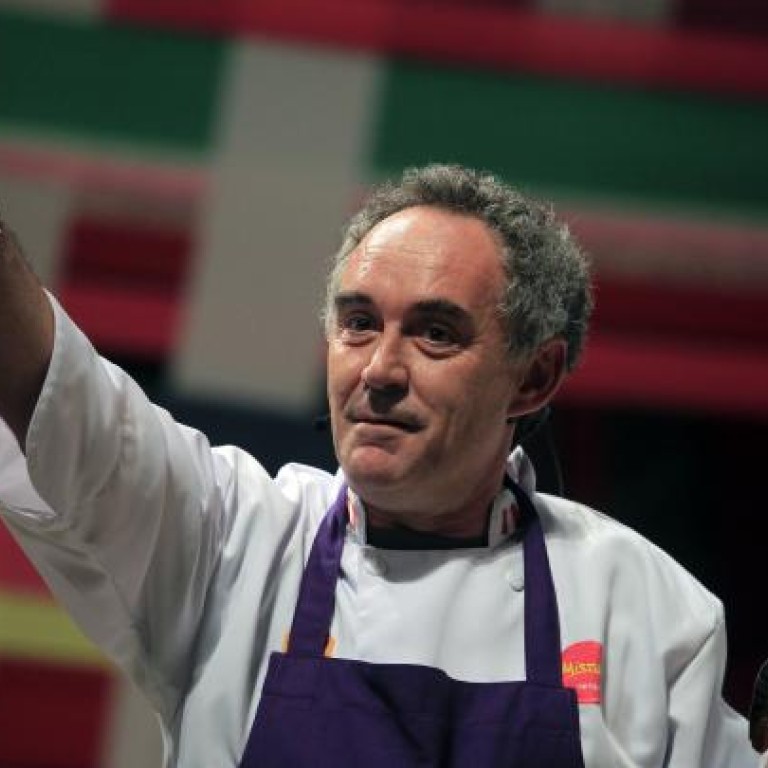
El Bulli auctions crown jewels
On February 14, 2010, Spanish restaurateur Ferran Adria shocked the world of fine dining by announcing that his eponymous eatery, elBulli, would close for two years. It seemed an odd decision, considering the waiting list of 3,000 people begging for a table.
But no, Adria, the revolutionary chef who made famous the art of de-constructing dishes was really deconstructing his own restaurant. Everyone wondered why the chef would close what many considered the best restaurant in the world.
The news even made the cover of the Financial Times.
By announcing the closure 18 months ahead, he was factoring in time to gather his thoughts, or so he said. Diners hoped that the restaurant would re-open but within a month, he announced the creation of elBullifoundation, a decision that would guarantee the future of elBulli in a different guise. All this I know from the fat Sotheby’s catalogue of the sale of the elBulli cellar, the extraordinarily vast wine collection being auctioned by Sotheby’s in Hong Kong today, April 3. The second part of the sale takes place in New York on April 26 and features not just one of the world’s greatest wine collections, but a lot more besides. Also going under the hammer is a range of elBulli serving dishes and plates, menus, knives, utensils and cookery books.
It’s all being sold to fund the elBullifoundation. Selling the wine cellar does not sound like he’s planning to re-open the restaurant any time soon. Through the foundation, Adria wants to preserve and celebrate the restaurant’s accomplishments, while keeping elBuilli as a centre for gastronomic innovation, says the erudite essay about him in the catalogue. He apparently found the daily grind of cooking lunch and dinner cramped his creative style. This break apparently gives him and his team the freedom to continue to nurture the creative drive that had defined elBullil, but without all those nasty restrictions of timetables and the demands of a restaurant.
Well yes, running a restaurant is, indeed, demanding.
Apparently Adria realised that none of the past great restaurants such as Maxim’s had been preserved and he wanted a different fate for elBulli. He was approaching burnout as it was and thought he could only sustain the pace and format for another couple of years, according to the Sotheby’s catalogue.
So the foundation will preserve “this beautiful story.” To mark the closure of elBulli, in July 2011, Adria carried out and served the last soufflé himself. Clearly a sense of theatre to the last. There is still something ironic about his decision that the best way to preserve something was to close it down, rather like the eternal fame of Marilyn Monroe and James Dean being assured by dying at the height of their fame. Nevertheless, it was decided that the best way to preserving the uniqueness of elBulli was to shut up shop.
ElBulli was opened as a modest seaside place in the early 1960s by a German, Dr Hans Schilling and his Czech wife Marketta. Adria arrived as a 19 year old dish washer in the kitchens. ElBulli had had two Michelin stars from the early days and so was already on Europe’s fine dining map. Acting according to the mantra “stop copying start creating” Adria set to with a will. He closed it down once before, for five months, to do some culinary experimenting, a decision that many considered unwise. But it gave him time to create a style of his own.
Adria has trained many of the world’s leading cooks and is credited with saying there are fewer than 2,000 good chefs globally and that of those, 70 to 80 per cent have done their time with him. I don’t know how many of the world’s other great chefs would agree, but that’s as may be. The place got an upgrade in the early nineties and deconstructing and reconfigure traditional dishes became his thing. The team worked on separating and reassembling ingredients in ingenious combinations. ElBulli redefined cuisine and became big box office.
From food to dining experience
By 1994 the focus shifted from creativity in food to creativity in the dining experience. Aside from taste and smell, the other senses now gained equal importance in Adria’s dishes. His techniques, processes and concepts came to the forefront. His innovations included spherification, savoury ice cream and flavoured froth, along with new forms of caramelisation. His creations owed as much to chemistry as traditional culinary art. elBulli not only gained the coveted third Michelin star, but also became international showbiz.
The waiting list grew. Adria expanded with a catering business and became a global superstar. He gave the world the CO2 syphon so others could recreate his famous froths. He also opened his creative workshop elBulliTaller in Barcelona. elBulliTaller is now his operations and business hub, with much time devoted to the foundation.
His guiding principles these days are risk freedom, and creativity, structured in two pillars, first, the conversion of the restaurant into a research centre, and second, the creation of Bullipedia, a web-based archive of global culinary history, set to open in 2014. Expect 40,000 objects related to elBulli.
He says they will also host dinners throughout the year to raise funds for the foundation itself. So the wealthy will still be able to eat his food.
In the meantime Adria dedicates his days to reading and research. His current thing is to find the link between food groups and taxonomy. It all sounds very worthy and dreadfully dull. Whatever happened to his food adventurous, theatrical and fun?

